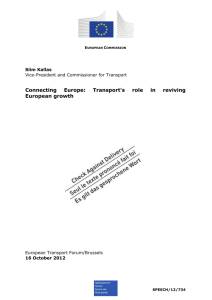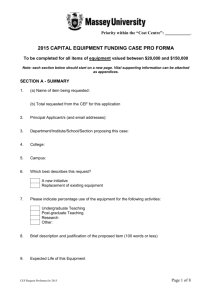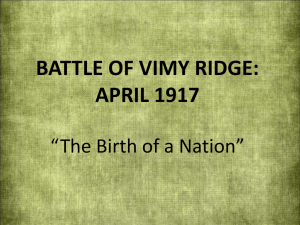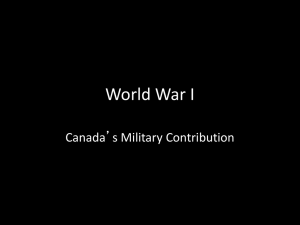CEF
advertisement
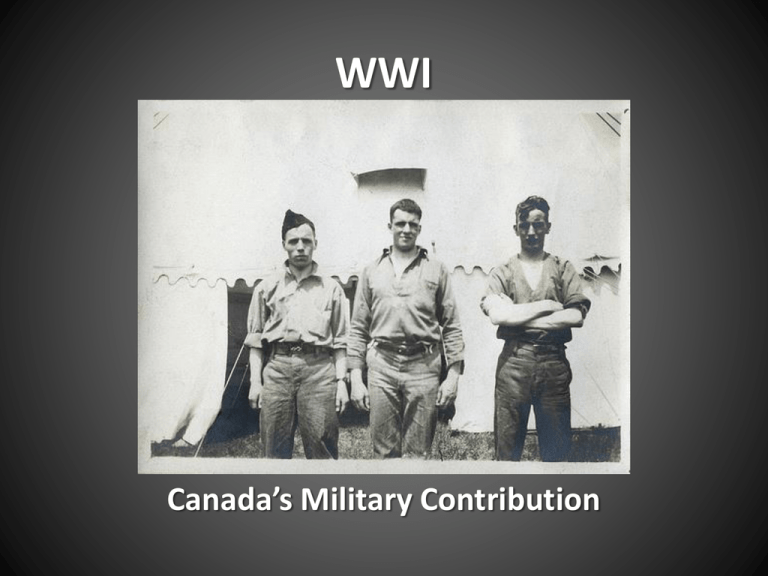
WWI Canada’s Military Contribution The Canadian Expeditionary Force (CEF) When the war began, Prime Minister Robert Borden offered Britain 25,000 troops. Within a month, more than 30,000 Canadians had joined the CEF! Why? They believed the war would be short. They saw it as an exciting adventure. It was a way to escape financial problems. They felt it was their patriotic duty. The Canadian Expeditionary Force (CEF) However, not everyone was welcome to join the CEF: The people who were excluded included Women Aboriginal Canadians African Canadians Japanese Canadians Eventually, the CEF did accept these groups, but Women were only used as nurses and ambulance drivers Minorities were almost never promoted The Canadian Expeditionary Force (CEF) Why was the CEF important to Canada? The CEF has been credited with helping to create a National Identity in Canada. It was the first time that Canadians from coast to coast had been brought together to fight side by side. This made people living in Canada feel a little more Canadian and a little less British. The Battle of Ypres (April 1915) This is the first battle in which the Germans used chlorine gas against Canadian troops. Soldiers were blinded, burned and suffocated by the gas. 6,000 Canadians were killed, wounded or captured. Incredibly, the Canadians managed to hold on to their lines, and neither side gained the advantage. The Battle of the Somme (July-November 1916) British General Douglas Haig ordered British, French and Canadian troops to attack German positions near the Somme River. The strategies he used were outdated; he simply ordered soldiers to march across open fields towards the enemy. Results: Casualties were great! 85% of the Royal Newfoundland Regiment was killed or wounded in the first half hour. 24,000 Canadians were killed or wounded, along with 1 million soldiers from the other countries. The Battle of Vimy Ridge (April 1917) British General Julian Byng prepared the CEF for an attack on Vimy Ridge The French had tried to take Vimy 3 times, but failed. Byng developed good strategies (tunnels, maps, Vimy Glide) and trained the troops very well before the attack. Between April 9 and April 12, the CEF managed to capture the entire ridge! The CEF gained more ground, captured more weapons and took more prisoners than any previous allied offensive. The victory made Canadians proud and helped to create a greater sense of national identity. The Battle of Passchendaele (Autumn 1917) Canadian General Arthur Currie and the CEF were ordered to help take Passchendaele Ridge in Belgium. This ridge had little strategic value, but Haig wanted it to be taken because he had lost it earlier in the war. Earlier battles had left huge crater holes in the ground which were filled with mud. Soldiers and horses often drowned in these conditions. This ridge was taken, but 15,000 Canadians were killed along with 500,000 soldiers from both sides.

